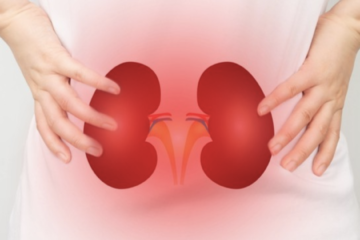
Smoking is a widely recognized risk factor for various health problems, including lung cancer, heart disease, and respiratory conditions. However, one area that often goes overlooked is the detrimental impact of smoking on bladder health. The bladder, a crucial organ responsible for storing and eliminating urine, is significantly affected by the harmful chemicals present in tobacco smoke. Understanding the effects of smoking on bladder health is important for both smokers and non-smokers alike, as it highlights the risks associated with smoking and emphasizes the significance of maintaining a smoke-free environment.
In this blog, we will delve into the adverse effects of smoking on bladder health, exploring the mechanisms through which smoking contributes to bladder conditions and diseases. By shedding light on this topic, we aim to raise awareness about the consequences of smoking on bladder function, encourage smokers to quit, and promote a better understanding of the importance of bladder health among the general population.
The Anatomy and Function of the Bladder
The bladder is a hollow organ located in the pelvic cavity, responsible for storing and eliminating urine from the body. It is a flexible, muscular structure that can expand and contract to accommodate varying volumes of urine. The bladder is composed of several layers, including an inner lining of transitional epithelial cells that allow for stretching. The detrusor muscle, a smooth muscle layer, surrounds the bladder and aids in its contraction during urination.
The bladder receives urine from the kidneys through the ureters, which transport urine to the bladder. The urethra, a tube-like structure, connects the bladder to the external opening for urine elimination. The urethral sphincter muscles help control the flow of urine out of the bladder.
The primary function of the bladder is to store urine until it is voluntarily released during urination. As urine accumulates in the bladder, the bladder wall stretches, signalling the brain that it is time to empty the bladder. This triggers the contraction of the detrusor muscle, while the sphincter muscles relax, allowing urine to flow out through the urethra. Maintaining a healthy bladder is crucial for urinary continence and waste elimination. Disruptions in the bladder’s anatomy or function can lead to various bladder conditions and diseases, impacting overall urinary health. Factors such as smoking can significantly affect bladder health, contributing to inflammation, dysfunction, and an increased risk of bladder cancer. Understanding the effects of smoking on the bladder can help raise awareness about the importance of maintaining a smoke-free lifestyle for optimal bladder function.
Smoking and Bladder Cancer
Bladder cancer is a serious condition that involves the abnormal growth of cells in the bladder. It is the fourth most common cancer among men and the ninth most common among women worldwide. Smoking is widely recognised as a significant risk factor for developing bladder cancer. In fact, it is estimated that smoking accounts for nearly half of all bladder cancer cases. Let’s explore the link between smoking and bladder cancer, the carcinogens present in tobacco smoke, the mechanisms of bladder cancer development, and the associated statistics and risk factors.
The Link between Smoking and Bladder Cancer: Extensive research has established a strong association between smoking and the development of bladder cancer. Smokers are at a considerably higher risk of developing bladder cancer compared to non-smokers. The risk increases with the duration and intensity of smoking. Additionally, exposure to secondhand smoke can also contribute to an increased risk of bladder cancer.
Carcinogens in Tobacco Smoke: Tobacco smoke contains numerous harmful chemicals, including carcinogens, which are substances capable of causing cancer. Two prominent carcinogens found in tobacco smoke that specifically affect bladder health are aromatic amines and polycyclic aromatic hydrocarbons (PAHs). These substances are absorbed into the bloodstream through smoking and eventually excreted in the urine, directly exposing the bladder tissues to their damaging effects.
Mechanisms of Bladder Cancer Development: The carcinogens present in tobacco smoke can initiate the development of bladder cancer through various mechanisms. When these substances reach the bladder, they can cause DNA damage in the bladder cells, leading to genetic mutations and abnormalities. Over time, these mutations can accumulate and result in uncontrolled cell growth, leading to the formation of tumours in the bladder.
Statistics and Risk Factors: The impact of smoking on bladder cancer is reflected in the statistics. Smokers are estimated to be two to three times more likely to develop bladder cancer compared to non-smokers. Furthermore, the risk remains elevated even years after quitting smoking. The longer the duration and higher the intensity of smoking, the greater the risk of bladder cancer. Other risk factors for bladder cancer include exposure to certain occupational chemicals, chronic bladder infections, and family history of the disease. However, smoking remains the most significant modifiable risk factor.
Smoking and Bladder Inflammation
In addition to being a significant risk factor for bladder cancer, smoking can also contribute to bladder inflammation, leading to various bladder conditions and urinary tract problems. The harmful chemicals present in tobacco smoke can irritate and damage the delicate tissues of the bladder, causing inflammation and increasing the risk of urinary tract infections (UTIs) and other inflammatory conditions. Let’s explore the effects of smoking on bladder inflammation, the increased susceptibility to UTIs, the role of chronic inflammation, and its impact on bladder pain syndrome/interstitial cystitis.
Effect of Smoking on Bladder Lining: The chemicals in tobacco smoke, including nicotine and other toxins, can directly affect the lining of the bladder. These substances irritate and damage the bladder tissues, leading to inflammation. The bladder lining becomes more vulnerable and sensitive, making it prone to various inflammatory conditions.
Increased Susceptibility to Urinary Tract Infections (UTIs): Smoking compromises the immune system’s ability to fight off infections, including those affecting the urinary tract. The chemicals in tobacco smoke can impair the natural defence mechanisms of the bladder, making it easier for bacteria to establish infections. Smokers are more susceptible to UTIs, which can cause significant discomfort and further exacerbate bladder inflammation.
Chronic Inflammation and Its Consequences: Smoking-induced inflammation can lead to chronic inflammation of the bladder. Chronic inflammation is a persistent immune response that can damage the bladder tissues over time. This ongoing inflammation can contribute to the development of various bladder conditions and urinary symptoms.
Impact on Bladder Pain Syndrome/Interstitial Cystitis: Bladder pain syndrome, also known as interstitial cystitis, is a chronic condition characterized by bladder pain and discomfort. Smoking has been shown to worsen the symptoms of interstitial cystitis. The chemicals in tobacco smoke can further irritate the already inflamed bladder, intensifying the pain and discomfort experienced by individuals with this condition.
Smoking and Bladder Dysfunction
Smoking not only increases the risk of bladder cancer and inflammation but also has detrimental effects on bladder function. Bladder dysfunction refers to abnormalities in the normal storage and emptying of urine, leading to various urinary symptoms and disorders. Smoking can contribute to bladder dysfunction, resulting in issues such as urinary incontinence, reduced bladder capacity, overactive bladder, and compromised bladder contractility. Let’s explore the relationship between smoking and bladder dysfunction in more detail.
Smoking and Urinary Incontinence: Urinary incontinence is the involuntary leakage of urine, and smoking has been identified as a risk factor for this condition. The chemicals in tobacco smoke can weaken the pelvic floor muscles and cause chronic coughing, which can lead to stress incontinence. Additionally, smoking-induced inflammation and irritation can contribute to an overactive bladder, further exacerbating urinary incontinence symptoms.
Reduced Bladder Capacity: Smoking has been associated with reduced bladder capacity, which refers to the amount of urine the bladder can hold comfortably. Chronic smoking can affect the elasticity of the bladder muscles, leading to a smaller bladder capacity. This can result in frequent urination and an increased urge to urinate, even with small amounts of urine.
Overactive Bladder: An overactive bladder is characterized by a sudden, strong urge to urinate, often accompanied by urinary frequency and urgency. Smoking can contribute to the development or worsening of overactive bladder symptoms. The chemicals in tobacco smoke can irritate the bladder lining and disrupt normal bladder function, leading to increased bladder sensitivity and involuntary contractions.
Compromised Bladder Contractility: Smoking can impair the ability of the bladder muscles to contract effectively during urination, resulting in weakened bladder contractility. This can lead to incomplete emptying of the bladder, causing residual urine to remain. Over time, this can increase the risk of urinary tract infections and other complications.
If you are experiencing bladder dysfunction or related symptoms, it is advisable to consult with a healthcare professional who can provide appropriate evaluation and guidance. Quitting smoking and adopting a smoke-free lifestyle is crucial for promoting optimal bladder function and reducing the risk of bladder dysfunction.
Dr. Sumit Sharma is an experienced urologist, andrologist, and kidney transplant surgeon with over 20 years of clinical experience. He is the founder of the Department of Urology at multiple hospitals in Gurgaon and has established successful kidney transplant programs across the city.
Conclusion
The detrimental effects of smoking on bladder health cannot be overstated. Smoking not only increases the risk of bladder cancer but also contributes to bladder inflammation, dysfunction, and other urinary complications. The chemicals in tobacco smoke directly harm the delicate tissues of the bladder, leading to long-lasting damage and compromising its normal function.
Understanding the effects of smoking on bladder health is crucial for both smokers and non-smokers. For smokers, this knowledge serves as a powerful motivation to quit smoking and take control of their bladder health. Quitting smoking can significantly reduce the risk of bladder-related diseases and improve overall well-being. For non-smokers, understanding these risks reinforces the importance of maintaining a smoke-free environment, supporting and encouraging smokers to quit, and promoting awareness of the dangers of secondhand smoke.
It is never too late to quit smoking and make positive changes for bladder health. By quitting smoking, individuals can reduce inflammation, improve bladder function, and lower their risk of developing bladder conditions and diseases. Seeking support from healthcare professionals, utilizing smoking cessation programs, and leaning on a strong support system can greatly increase the chances of successful smoking cessation.
Let’s prioritize our bladder health by saying no to smoking and creating a healthier environment for ourselves and those around us. Together, we can promote bladder health, reduce the impact of smoking, and strive for a better quality of life.
Dr. Sumit Sharma is an experienced urologist, andrologist, and kidney transplant surgeon with over 20 years of clinical experience. He is the founder of the Department of Urology at multiple hospitals in Gurgaon and has established successful kidney transplant programs across the city.



